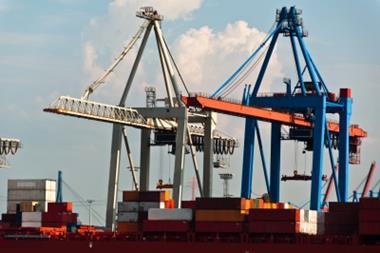How risk managers can learn vital lessons in resilience from the global vaccine effort
The global vaccine roll-out has been fraught with supply chain delays, political rows, and export restrictions. However, despite the challenges, many countries have been inoculating at pace.
One of the most widely-publicised issues is the struggle to ship and store highly sensitive vaccines at the right temperature. Depending on the manufacturer, temperatures of up to -80 degrees Celsius must be maintained throughout the entire logistics chain - from the production facility to the hospitals, vaccination centres, doctors’ surgeries or pharmacies.
Simon Dixon CEO of Hatmill said: “[The vaccine supply chain] is highly complex in many respects; volatile and changeable supply, limited shelf life of the product, the requirement to maintain a temperature-controlled chain, a need to balance the distribution of the vaccine across geographies and at-risk cohort groups.
“These factors, coupled with the attention of the nation on the number of vaccines administered each day, put significant pressure on everyone involved in the roll out.”
Even interim storage of vaccines requires specialised freezers with monitoring and alarm capabilities.
Lee Meyrick, co-lead Global Specialties & chief executive officer Global Marine, Commercial Risk Solutions at Aon, said: “There is inconsistent availability of infrastructure (particularly for the Ultra-Low Temperature shipments) and varying levels of experience of handling such movements across the various geographies – particularly in-country and last mile transits.
“This has led to a lack of uniformity, uncertainty and potential stress points in the supply chain which have been exacerbated by the multiple vaccines with different temperature ranges and shelf-life requirements.”
The broker is using the Internet of Things (IoT) as part of an innovative collaboration to provide supply chain protection for global COVID-19 vaccine shipments.
Volume, scale and safety
But it is clear that more needs to be done to meet the demands of a complex global logistics chain.
Already difficult challenges have only been exacerbated by the sheer scale and volume of vaccines needing to be shipped. Global logistics company DHL estimates that an expected 10 billion doses need to be transported over a period of two years to deliver the vaccine worldwide.
This will necessitate 15,000 flights, 15 million cooling boxes and approximately 200,000 movements by pallet shippers.
Clearly, with such a massive scale operation there are significant opportunities for things to go wrong.
Ben van der Schaaff, a partner at Arthur D. Little said: “It’s not surprising that scaling up is a major challenge, and it’s also opened doors to the greatest risks. The volumes that need to be manufactured are well beyond existing capacity – so not being able to meet demand because of shortage in capacity or issues in manufacturing (as evidenced by Emergent BioSolutions and J&J) are a major risk.”
“Scaling is not necessarily about building new capacity,” he continues. “It can also be about leveraging the wider ecosystem to identify existing capacity that can be used… From a resilience perspective, we should look at redundancy in the wider ecosystem, not just in our own enterprise or network of vendors. “
A related concern is that the accumulation of vaccines at various points in the supply chain has caused storage issues and, in some cases, significant concentration of value.
For instance, industry analysts put the value of the vaccines to be shipped at up to $100 billion - an unprecedented amount in a relatively short period of time. The value concentration for single shipments stored at facilities such as airports, could reach triple-digit million USD values.
Sean Dalton, head of Marine Underwriting, North America at Munich Reinsurance America said: “It is vital for insureds, insurers and reinsurers alike to make sure that risk management measures are in place to monitor and control the accumulations effectively.”
“In some countries, we can expect that there will be considerable risk of theft and hi-jacking of these highly valuable consignments. Sophisticated security arrangements and loss prevention measures must be put in place along the entire supply chain.”
The black market
The distribution of fake vaccines also threatens the success of the vaccination program worldwide, and has massive health and safety implications.
Risk managers should ask: ‘Who is performing the initial and final mile movement of the goods?’ and ‘Can the supply chain be simplified to reduce the number of interactions or mode changes?’ Training and raising awareness of the threats is also vital to mitigate these risks.
Collaboration between all supply chain actors including manufacturers, shippers and logistics operators is extremely important.
Mike Yarwood, TT Club’s managing director, advises sharing data to mitigate risk. Each link in the chain will have individual responsibilities contractually and from a regulatory standpoint. Failure on the part of any firm therefore has the potential for severe consequences.
Political risks and rows
Political skirmishes over vaccine supply and delivery have also been eye-opening. The ongoing tension between the UK and Europe over the AstraZeneca vaccine is just one example of this. Furthermore, intense media scrutiny has meant all eyes are on the governments and companies involved.
One wider lesson for risk managers is that managing stakeholders, including governments, suppliers, partners and the media is critical and needs to start early.
Then there is the interconnectedness of supply chains and how this complexity means that several risks can combine simultaneously.
For instance, the Integration of the vaccine supply chain with the drug delivery process has caused several unexpected challenges. Manufacturing vaccines in such a short period of time would be challenge enough, but one of the greatest struggles has been to line deliveries up with on the ground resourcing to get as many people vaccinated as possible.
Aon’s Meyrick explained: “The need for disaster contingency business planning is essential, as is a well thought-through media response plan should a serious issue occur.”
The challenges presented by the vaccine rollout and some of the ways in which they are being overcome offers a wider benchmark going forward. It is clear that all businesses must fully understand the interdependencies and pinch points of their supply chain in as much detail as possible.
Risk managers should look at back-up options and map out knock-on effects – whilst also working with partners to manage and mitigate these exposures.
Many of the risks, including those caused by intertwined and complex supply chains are far from new. Instead, the pandemic has challenged risk managers to redefine the extent of existing exposures.




















No comments yet